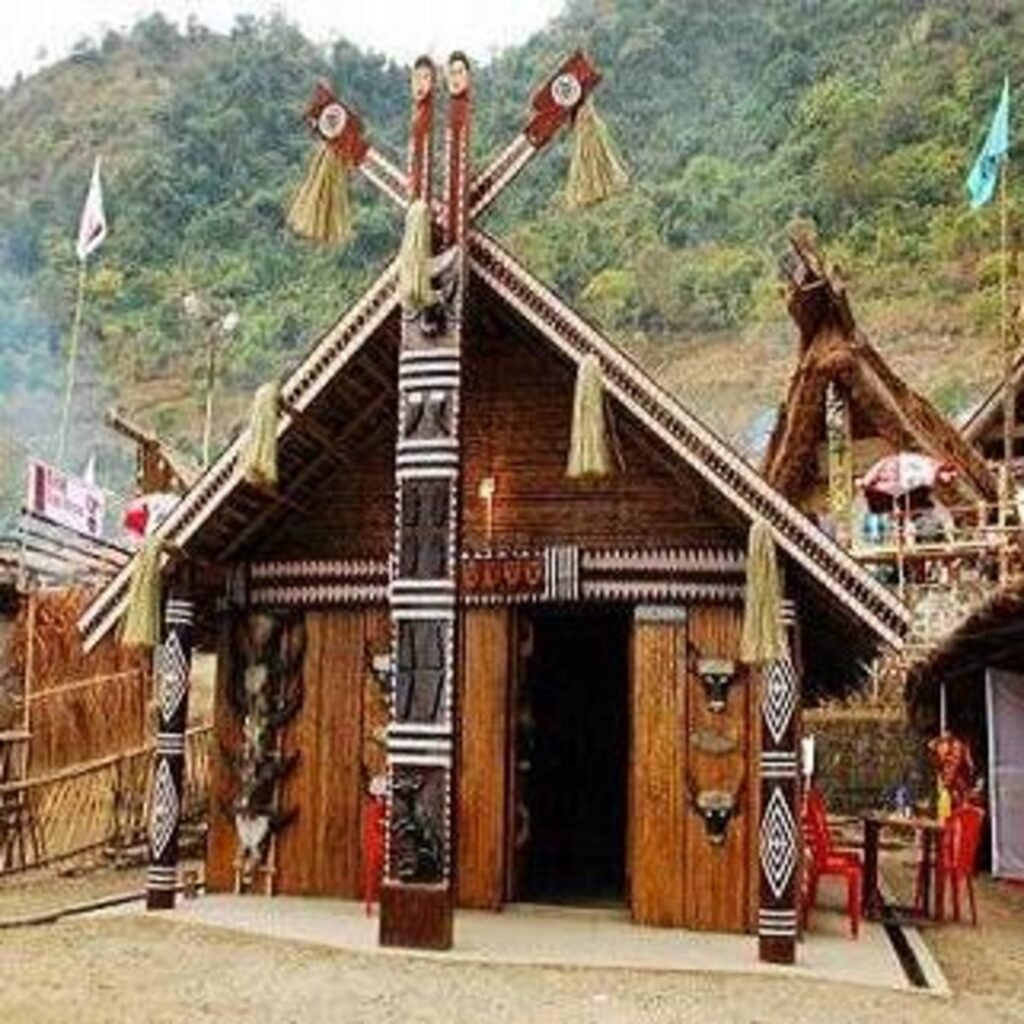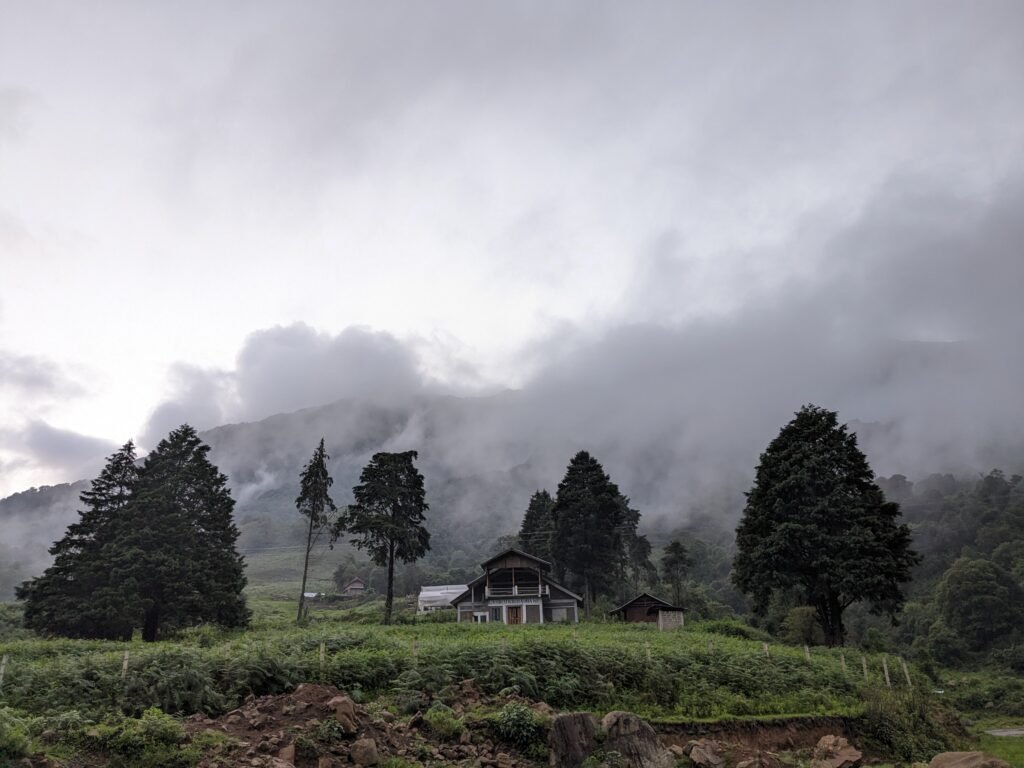Nestled within the picturesque expanse of Kohima, the eminent capital city of Nagaland, lies the alluring Kisama Village, popularly known as Naga Heritage Village. This concealed treasure, veiled in cultural opulence and innate magnificence, beckons to intrepid souls in pursuit of an unparalleled sojourn. Within this narrative, we embark upon an odyssey to unfurl the enigmatic secrets that Kisama Village conceals, delving profoundly into its historical import, effervescent cultural jubilations, and the seamless amalgamation of time-honored tradition with the contemporaneous.
A Glimpse into Antiquity: Unraveling the Historical Weave of Kisama
Kisama Village, an intricately woven tapestry across the annals of time, exudes an ambiance of chronicles that saturate every nook of its idyllic milieu. Enrooted in antiquity, the village stands as a testament to sagas of valor and fortitude exhibited by the Naga denizens during pivotal junctures. The village represents as an ancient Naga village that gives the experience of traveling back in time. This sepulcher serves as a muted attestation to the gallantry and unwavering resilience emblematic of Kisama Village.

The Panorama of Diversity: The Grandeur of the Hornbill Festival
Central to Kisama Village’s global repute stands the resplendent Hornbill Festival, often christened the ‘Festival of Festivals.’ Encompassing the epoch from the 1st to the 10th of December, this extravaganza is a panorama that vividly unfurls the cultural mosaic of the Naga clans. Each clan unfurls its unique rites, harmonies, choreography, and craftsmanship, portraying a vibrant tableau of Naga heritage. Amidst the cadence of autochthonous instruments and the poise of ancestral martial choreographies, the festival conserves cultural patrimony and fosters harmony among the heterogeneous Naga populace.

Immersing in Indigenous Life: A Glimpse into Naga Livelihood
Kisama Village emerges not merely as a passive onlooker of culture but actively partakes in the guardianship and dissemination of local existence. Traditional enclaves, affectionately termed ‘morungs,’ embellished with intricate woodwork and thatched roofing, epitomize the architectural finesse of the Naga inhabitants. Visitors are extended invitations to engage in tactile encounters, such as the traditional craftsmanship of weaving, wherein age-old methodologies are bequeathed through successive generations. The delectable relishes of Naga gastronomy, spotlighting bamboo shoots, and preserved meats, proffer an authentic Epicurean odyssey. Mingling with the genial locals, acknowledged for their affable hospitality, yields profound insights into the quintessence that binds the Naga community in harmonious accord.
Embracing Nature’s Grandeur: Embarking upon an Expedition to the Wilderness
Transcending its cultural opulence, Kisama Village ardently embraces the innate splendor of Nagaland, portraying an assorted biome that epitomizes the artistry of nature. Artfully stationed near Nagaland’s second-highest zenith, the Japfu Peak, the village extends an exhilarating prospect for trekkers to conquer its summit. The Dzükou Valley, a veritable ‘Botanical Utopia,’ metamorphoses into a symphony of hues during its blossoming phase, bedecked with native flora. Kisama Village further serves as a threshold to the Pulie Badze Wildlife Sanctuary, affording a sanctuary for rare avian species, including the elusive Blyth’s tragopan. Devotees of the wilderness can embark upon ornithological sojourns, reveling in the aerial populace that graces the sanctuary’s precincts.
Convergence of Legacy and Advancement: Kisama’s Modern Identity
While profoundly rooted in tradition, Kisama Village serves as an archetype of the harmonious fusion between modernity and ancestral heritage. The village champions sustainable modalities, accentuating eco-conscious endeavors like refuse management and the harnessing of renewable energy. Autochthonous entrepreneurs have birthed boutique lodgings that harmoniously coalesce with the terrain, proffering a sumptuous haven for guests. Master craftsmen have adeptly melded classical handicrafts with contemporary mediums, infusing renewed vitality into Naga shawls and handwoven textiles. This symphony of equilibrium ensures the evolutionary trajectory of Kisama Village while safeguarding its cultural quintessence.

Guardianship for Posterity: Nurturing Coming Generations
As the sun descends over Kisama Village, casting a gilded hue upon its rustic allure, the exigency of perpetuating its heritage becomes manifest. Initiatives are in motion to transmit ancestral sagacity, guaranteeing the enduring luminosity of Naga heritage. Cultural establishments and enclaves have risen, imparting conventional arts, craftsmanship, and folklore tenets. The commitment to heritage preservation finds embodiment in the State Museum of Nagaland, nestled within Kisama Village, boasting an expansive assortment of relics that chronicle the odyssey of the Naga people through the annals of time.
Eternal Panorama: The Timeless Imprint of Kisama Village
In the heart of Kohima, Kisama Village stands as an everlasting panorama woven from strands of history, culture, and nature. Its allure transcends the realm of scenic elegance and spirited festivities; it resides within the unswerving tenacity of its denizens. As you traverse the cobbled pathways and immerse yourself in the vivacity of the Hornbill Festival, bear in mind that you are not merely a spectator, but an active participant in an unfolding narrative that traverses generations. Kisama Village extends an invitation to unearth its treasures, cultivate connections with its populace, and barter the mundane for the extraordinary. Set forth upon an odyssey to Kisama Village, where tradition and advancement waltz in a symphony, where each stride reverberates through the continuum of time, and where the covenant of a vibrant tomorrow unfurls.




